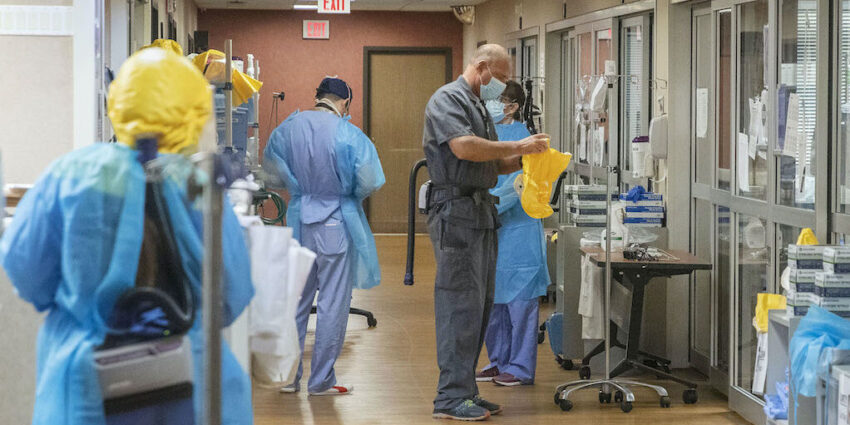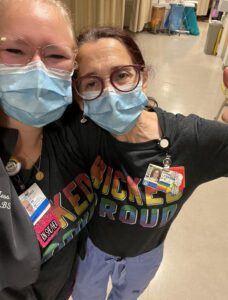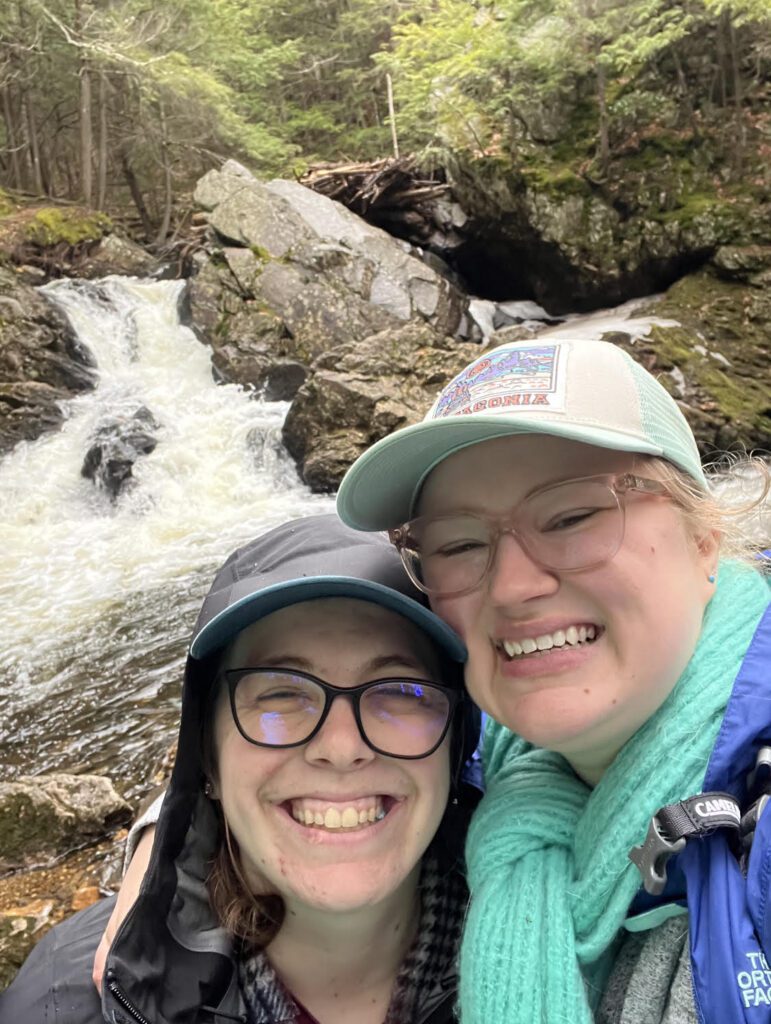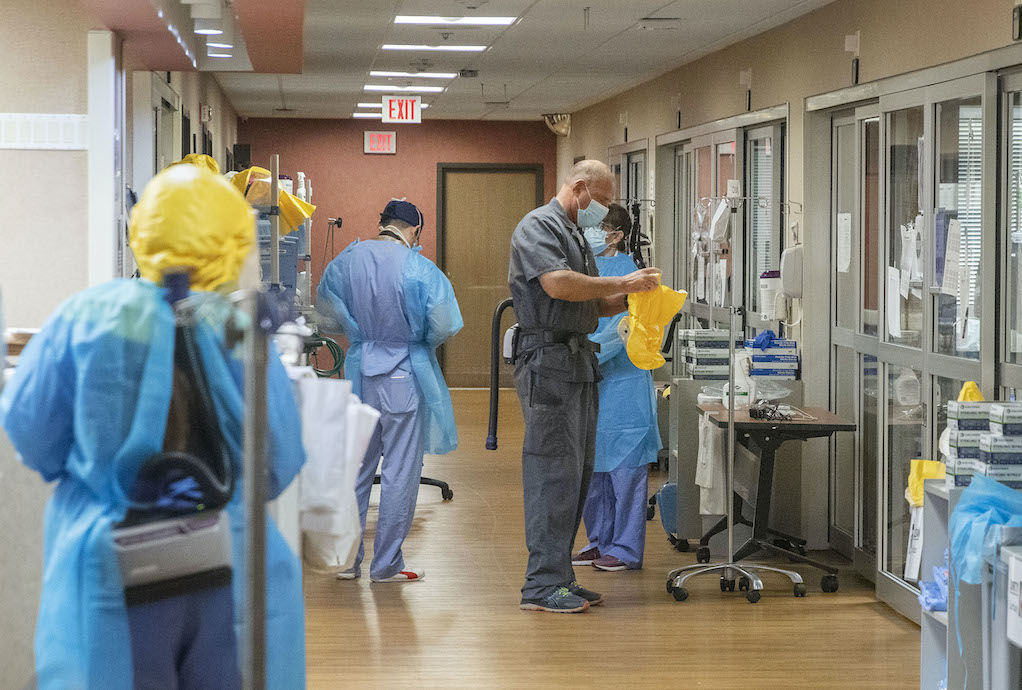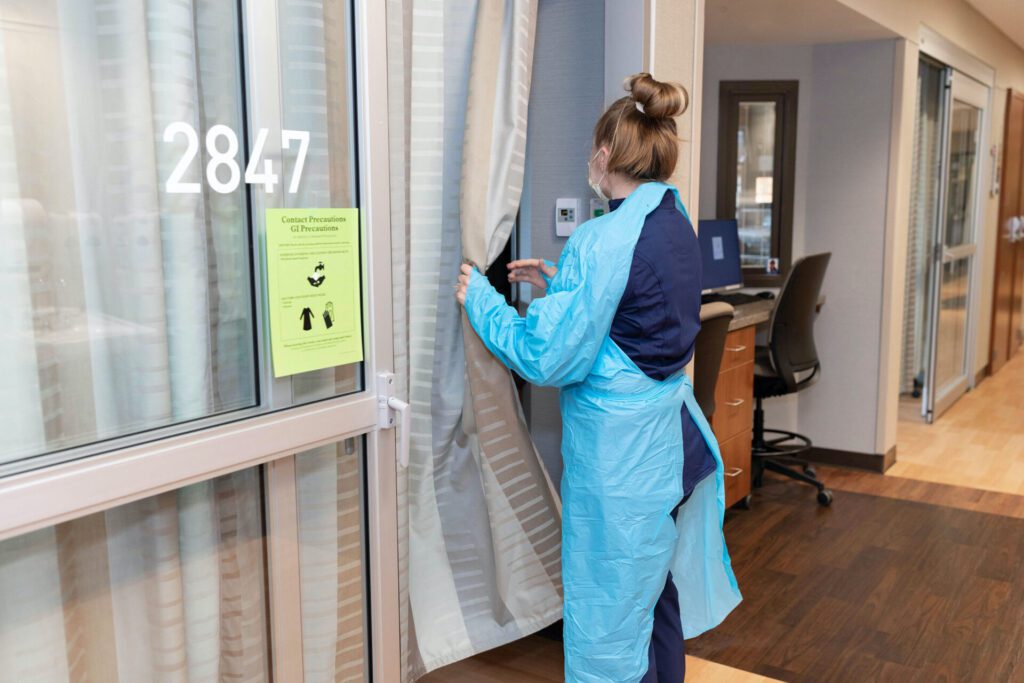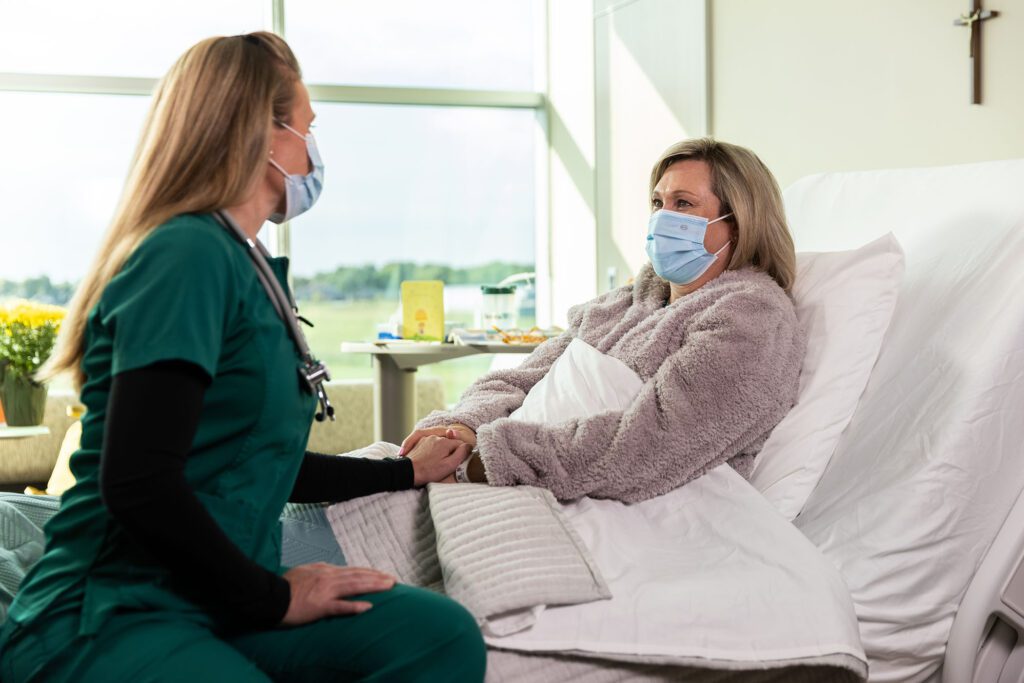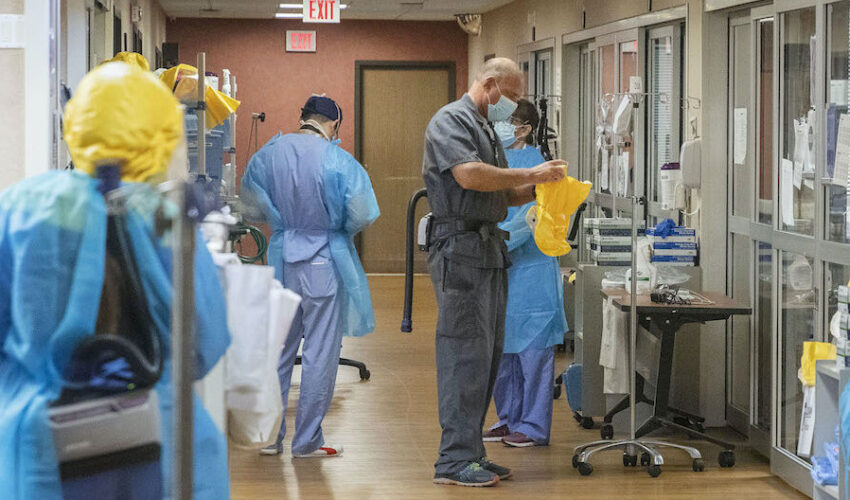Travel nursing creates opportunities for workers, drain on health systems
Oct. 3, 2022
In some ways, Jessica Daniels was pushed into becoming a traveling nurse.
She was working at a Sioux Falls hospital at the onslaught of the COVID-19 pandemic and placed on a COVID team where she handled cases day in and out. She was stressed and tired, and also was told she was “replaceable” by her manager during the chaos of the time, she said.
But in other ways, the 26-year-old nurse was pulled into the travel position.
She thrives in fast-paced environments and has longed to travel across the country. The Sioux Falls local also saw the opportunity of higher pay during the pandemic’s peak — seeing job postings for more than three times her salary as a traditional nurse.
So she and her now-fiance Abby Moschell took the leap into travel nursing together. It has been nearly two years, and they haven’t looked back.
“Instead of being ‘replaceable’ in a place where I am at home, I could see different places and not interact with the politics as much,” Daniels said. “I don’t have to go to meetings or get caught up in gossip. I just do my job and go home.”
Daniels and Moschell have been stationed in rural Idaho, Boston and are currently in Reno, Nevada. They’re hoping to work in all 50 states during their careers.
The pay rates for travel nurses across the country have dropped in recent months because hospitals are prioritizing a return to higher staff nurse numbers. They’re choosing to focus on recruiting nurses and retaining the staff they have left. Area hospitals are even hiring internationally or starting an internal travel nursing unit to address the need.
The yearslong nursing shortage has been exacerbated because many nurses retired early or left the profession because of burnout from the pandemic. And demand remains high because of an aging population, delayed health care from the pandemic and remaining COVID cases.
While the pay is still higher than a staff position, Daniels is seeing several nurses who jumped into travel nursing during the pandemic return to staff positions now.
But Daniels said she’s committed to travel nursing. She enjoys the pace and forming new friendships in her role.
“As a travel nurse, you’re expected, and should be expected, to know what you’re doing and be able to jump right in to help since that’s what you’re there for,” Daniels said. “I would never go back.”
Relying on travel nursing is unsustainable, hospitals say
In Idaho, Daniels was earning $3,500 a week after taxes, though she knew of contracts in California that were paying $11,000 for a 60-hour week.
Before, she earned $1,500 every two weeks after taxes as a staff nurse in Sioux Falls.
Now, the typical rate for a travel nurse is $2,300 to $2,700 a week, she said. Daniels added that she and her fiance still have to pay for a house in Sioux Falls, so they have a “tax home,” but they’ve been able to make significant headway paying off student loans and other debts.
“It’s not nearly as much as during COVID,” Daniels said, “but it’s still way more than before.”
In Sioux Falls, both Avera Health and Sanford Health have been able to lessen their numbers of travel nurses since the pandemic. Avera has about 150 travel nurses systemwide and averaged fewer than 50 before the pandemic and peaked at 250 during the height of it; Sanford contracted 75 at its peak in the Sioux Falls region and has less than half that number now.
Sanford in Fargo, however, had about 400 travel nurses at its peak, with about 200 currently contracted in the city.
The higher cost to cover travel nurse pay doesn’t affect nurses or patients — it affects the administration and how it can manage budgets, said Deb Fischer-Clemens, president of the South Dakota Nurses Association and senior vice president of public policy at Avera.
For example, Sanford’s portion of the budget typically reserved for contract workers inflated from nearly nothing to about 10 percent at the pandemic’s peak, said Kelly Hefti, vice president of nursing in Sioux Falls for Sanford, because of the cost of hiring travel nurses and other traveling contract workers.
“That creates financial implications. That creates tough decisions,” Hefti said. “We looked at that, and we had an obligation to make sure we were providing patients’ access and capacity to what they needed.”
The decreasing demand for travel nurses across the country reflects the unsustainability of a nursing workforce at those labor costs.
Most of the cost for travel nurses was paid for with the CARES Act or state-funded support during the pandemic. But now that the federal funds have dried up, hospitals have to take a hard look at what they can afford with their budget.
Travel nurses are meant to be a short-term solution, jumping in to help where they’re needed most. It creates inconsistency within the health care system to rely heavily on sparsely-oriented professionals who leave in 13 weeks.
“The question is how to get budgets under control,” Fischer-Clemens said. “Everybody has to work together, and we’re going to have to relook at what nurses need and want. What I hear is that it’s not just a salary; it’s helping them pay for schooling, making sure they get time off and that they have appropriate staffing of helpers.”
Seeking nurses outside the ‘normal pipeline’
To recruit nurses and retain nurses, area hospital leaders said they are looking into every option to maintain and grow their workforce. That includes offering incentives, changing the staff model, adding internal travel nursing programs or offering more flexible hours.
It’s necessary as the demand for health care in the state and region increases with population growth and an aging population.
Historically, Sanford in Sioux Falls recruits an average of 200 to 230 registered nurses a year. Based on current needs and into the future, that number will grow to 250 to 300 nurses a year, which will be an additional 1,500 nurses needed over the next five years.
But there were fewer people interested in going into nursing during the pandemic, Fischer-Clemens said. While the number of nursing graduates from area schools is returning to normal, it’s not meeting the need health care systems are anticipating.
“If you look into the future, even 2030 in a post-pandemic world, we’ll still have nursing shortages in South Dakota that will be worse than we are today based on the aging population and expected nurses coming into the workforce,” said Ryan Donovan, vice president of business development at Avera. “It won’t be a problem that will magically disappear.”
To address the immediate need, Sanford is planning to hire 40 international nurses over the next year in Sioux Falls and more than 700 across its footprint over the next three years. The nurses will be on three-year contracts at the health care system, which will help stabilize the nursing workforce, Hefti said.
About 10 international nurses have been hired so far for Sioux Falls and will start orientation at the beginning of 2023. It can take months to move the new hire and their family to the United States.
Nurses will come from 21 countries, including the Philippines, Saudi Arabia, Brazil, Nigeria and the United Kingdom. Some spouses also have been hired in other roles at Sanford or will join the state’s workforce elsewhere.
Avera is planning to hire international nurses as well, though it’s still in the planning stages, said Kimberly Enebo, vice president of talent and rewards. The health system is about 18 months out from bringing on international nurses, hoping to hire hundreds over time.
Avera’s current focus is on expanding nurse clinical internships, improving their hiring process, improving marketing efforts and planning staffing needs based on forecasting models, Enebo said.
“We’re planning based on when the surge is coming — making sure we’re being proactive in our needs versus what we lived through in the pandemic, which was reactive,” Enebo said. “We’re forecasting and using predictive modeling to determine what we need for our future, whether that’s for flu season or the next COVID surge.”
The system also kicked off an internal travel nurse program earlier in 2021, which has been a “win-win-win,” she added.
The program offers employees interested in traveling or exploring different nursing options the ability to do so within the Avera network, which keeps them employed within Avera and keeps the consistency needed within health care, Donovan said.
The program launched in March, and there have been 31 nurses who were hired onto the program since then. It’s a solution to keep employees of all levels from being enticed to leave the health care system to be a traveling nurse, Donovan said.
“At the end of the day, we’re competing against traveling agencies to hire these nurses,” he said. “We have to offer competitive nursing rates.”
Avera hopes to partner with other locations and hospitals regionally and nationwide in the future to expand past its footprint and become an even more enticing option for nurses interested in traveling or higher pay.
“This has really given us as an organization an opportunity to relook at how we do things,” Enebo said. “I think a reset is always a good thing. Everything got messed up, and now post-pandemic we can’t just do things we did before. We have to look at the why behind what we’re doing and improve the processes.”

